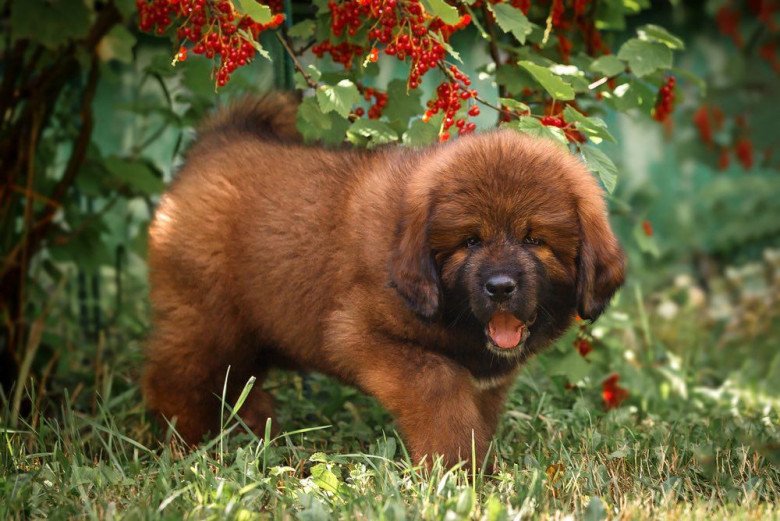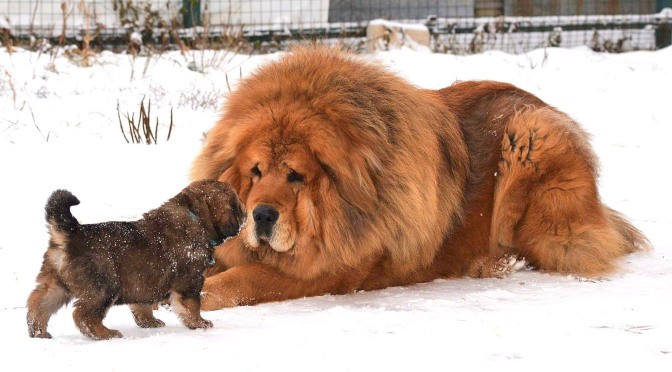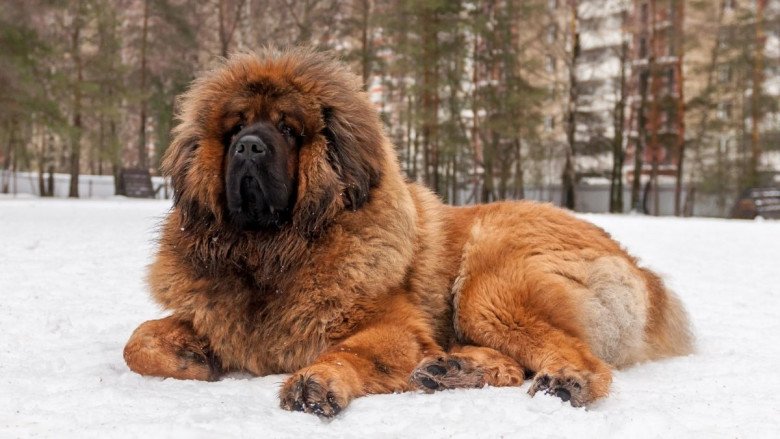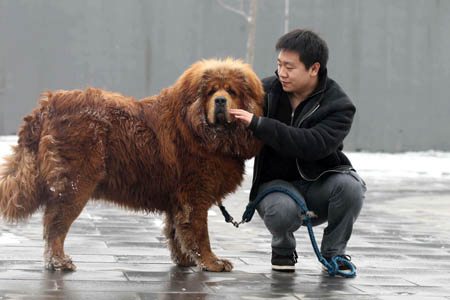What is the most expensive dog breed in the world ever purchased for 46 billion VND that makes tycoons so fascinated?
The Tibetan Mastiff is considered a symbol of power and wealth, with a long purebred bloodline.
In 2014, a Chinese tycoon spent about 1.9 million USD (more than 46 billion VND) to own a golden-haired Tibetan mastiff. At that time, this dog was 1 year old, 90 cm tall and weighed 90 kg. Previously, in 2011, a Tibetan mastiff was also bought for $1.5 million (more than 36 billion VND). Thereby, the Tibetan Mastiff became the most expensive dog breed in the world, desired and admired by many people.
For many tycoons, owning a Tibetan clam is not simply a pet, but also a sign of power and wealth. Because Tibetan mastiffs are not only expensive but also cost a lot of money to raise, care for, and breed. Let’s learn more about “the rich man’s pet”!

Not only “flexing” real estate or super cars, many tycoons choose to raise Tibetan mastiffs to show luxury.
Origin and origin of the Tibetan Mastiff
True to its name, the Tibetan Mastiff originates from the Tibetan Plateau of China. This dog breed is not only giant in size but is also the dog breed that retains the most original purebred genome. It is the purity and rarity that makes the Tibetan mastiff so valuable.
According to National Geographic statistics, there are only 5,000 dogs of this breed registered by the American Kennel Club and in fact, the number of dogs still alive is only about 1000 – 2000.


The Tibetan Mastiff is known as a purebred dog breed and retains the most original genes.
Characteristics of the “world’s most expensive” dog breed
Because of its origin in the northeast of the Himalayas, the Tibetan Mastiff is suited to cold climates. They have up to 2 layers of fur including a long soft coat on the outside and a wooly layer on the inside, helping them adapt to the harshest weather conditions. An adult Tibetan Mastiff is at least 70cm tall and weighs 60 – 90kg. The majestic and majestic size of the Tibetan Mastiff makes them look like a lion.

The Tibetan Mastiff has a lion-like appearance.
In terms of characteristics, although very strong and possessing a somewhat fierce face and sharp teeth that can cause injury, the Tibetan Mastiff is described as extremely friendly to its owner. The Tibetan Mastiff is highly alert so it can become a loyal and trustworthy “guardian”. In the Tibetan region, this breed of dog is also trained to herd livestock and protect people from wild animals in the mountains.

Its large appearance and bravery are the characteristics that help the Tibetan mastiff to be called the “god dog”.
Cost of owning and caring for a Tibetan Mastiff
In Vietnam, the price of Tibetan mastiff dogs ranges from 25 – 40 million VND, depending on age and purity. Imported dogs are more expensive. Tibetan mastiff imported from the European market costs about 200 million VND. In particular, mastiffs imported from their native Tibet can be worth several billion dong, because of their pure genes and beautiful appearance.

When raising a Tibetan mastiff, homeowners need to spend quite a bit of money on care, especially in a tropical country like Vietnam. This breed needs a large space to grow and must stay in a shady environment all day. The amount of food for Tibetan clams is also very large, not to mention the costs of health checks, vaccinations, training or breeding. These are the reasons that only people who really have the means “dare” to keep Tibetan mastiffs at home.





